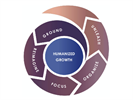Holmes Report 17 May 2015 // 3:41PM GMT

There is a dramatic gap between the way PR industry leaders evaluate their own performance and the way their employees view that performance, according to the first Plank Center Report Card on communication leadership, based on a survey of 838 US public relations executives and managers, most of them in in-house roles.
In general, leaders gave themselves an “A-,” while followers gave them a “C+.” Leaders received high marks for ethical orientation and involvement in strategic decision-making but earned lower marks for their vision, relationship-building skills, and team leadership capabilities.
“This gap doesn’t necessarily mean that leaders are ineffective,” says Bruce Berger, research director of the Plank Center. “Employees may be upset about other issues in their lives, or unhappy with a recent assignment or work review. But closing the gap is nevertheless important because leaders influence all other issues in our study.”
Two-thirds (67 percent) of PR professionals were satisfied or very satisfied with their jobs; 11 percent were neither satisfied nor dissatisfied; and 22 percent were dissatisfied or very dissatisfied. Top leaders were more satisfied with their jobs than those at all other levels. Agency PR professionals were most satisfied compared to those working in companies or nonprofits. Job satisfaction is strongly affected by engagement and trust, which are strongly influenced by leaders and organizational culture.
Trust received the lowest grade and was an issue at all levels, though lower-level PR professionals were more distrusting. Professionals trusted their organization’s capabilities to compete successfully and achieve its goals, but expressed less trust in their organizations to keep promises and to be concerned about employees when
making important decisions.
The study revealed four gaps that PR professionals and their organizations must reduce to strengthen leadership, communication practice, and results for their organizations:
- The perceptions of top leaders and followers. Top leaders rated their performance, trust, work engagement, job satisfaction and organizational culture significantly higher than followers at all levels. Things look different—and far better—at the top. Leaders may often rate their own performance higher than do followers, but the size of the gaps in the study is substantial. Berger says leaders can reduce the gaps by 1) increasing power sharing, 2) strengthening two-way communications, and 3) enhancing interpersonal skills to enrich relationships and team work.
- Existing culture and a culture for communication. Several issues—lack of 2-way communication, limited shared power in decision-making, and concerns about diversity—point to differences between professionals’ organizational cultures and an ideal type referred to as a culture for communication. This is characterized by: 1) an open communication system; 2) dialogue, discussion and learning; 3) the use of two-way communications; and 4) a climate in which employees can speak up and be listened to, without fear of retribution. PR leaders can be change agents and work with others to reduce or eliminate restrictive actions, practices, and structures in the culture.
- Professional women and men. Their perceptions of work culture, shared power, 2-way communications, and the valuing of their opinions differed sharply. Women seek more involvement in strategic decision making, they want their opinions to count for more, and they advocate for a more open communication system and climate. Because top public relations leaders hold decision-making power over some inequities in the field (e.g., pay and promotion) and exert influence on many others, they can close these gaps.
- Agencies and other organizational types. Professionals working in agencies rated most items and categories higher than other organizational types. The Gallup Report indicated that engagement levels are often higher in smaller work teams, which may be more characteristic of agencies. In addition, an organization with a CEO who is likely a communication professional, and employees who are largely communication professionals, may provide a clearer vision, mission and objectives. The agency structure and culture should be examined to identify best practices.
The survey was conducted by the Plank Center for Leadership in Public Relations and executive search firm Heyman Associates.


































.jpg)




.tmb-135x100.jpg)


.tmb-135x100.jpg)









